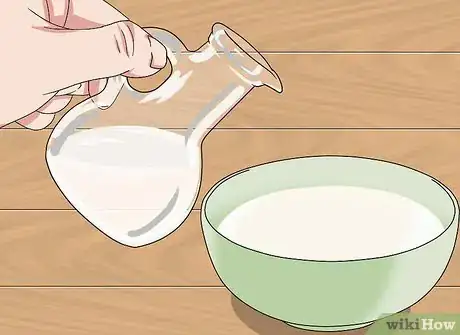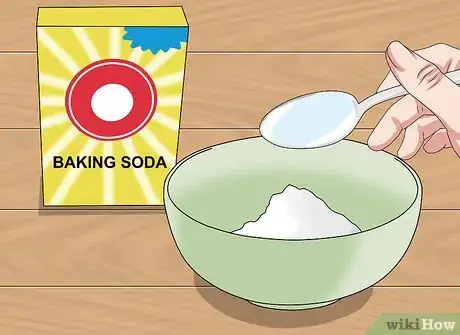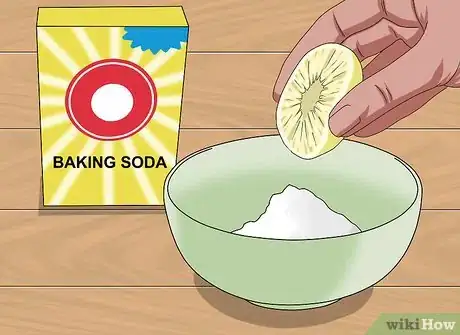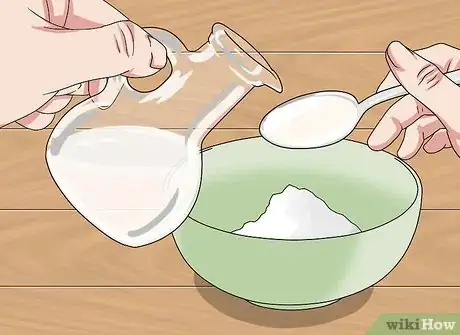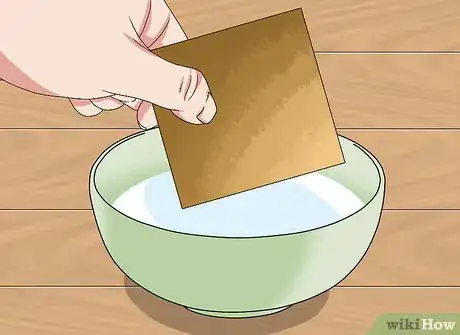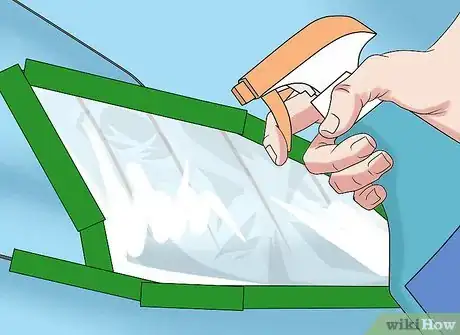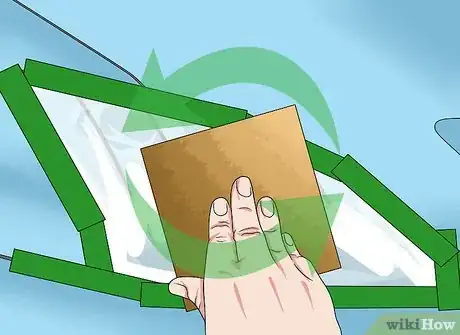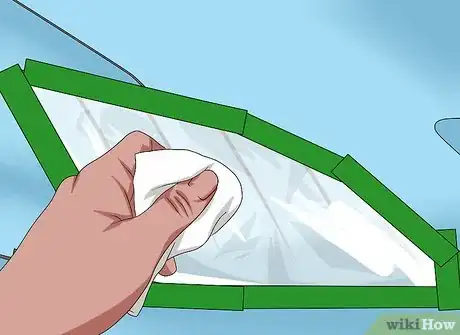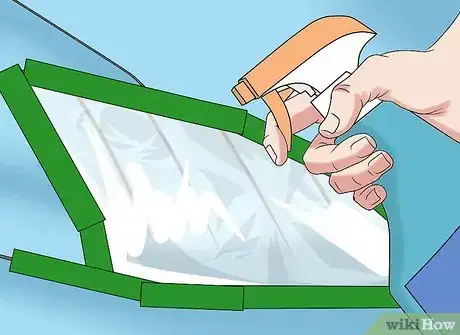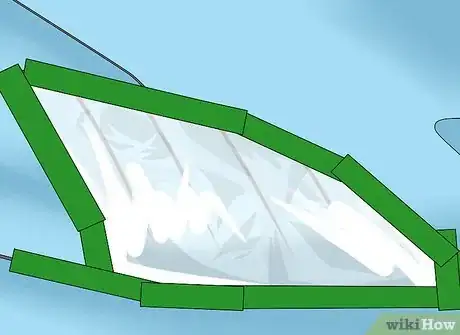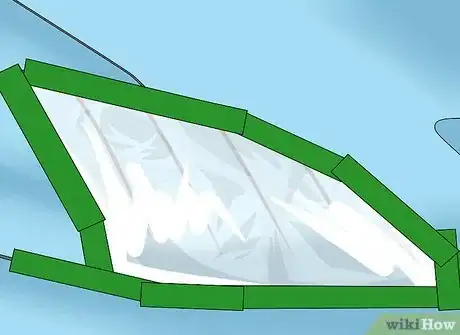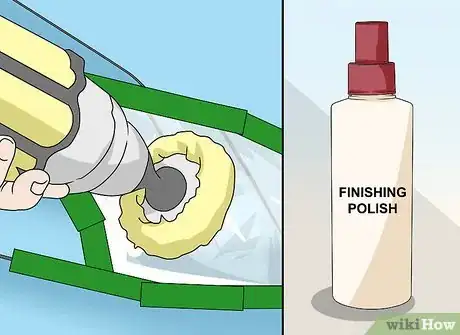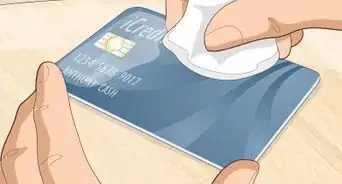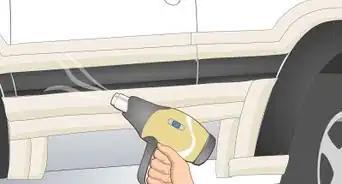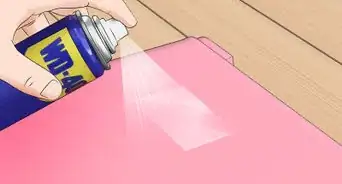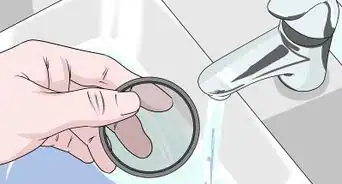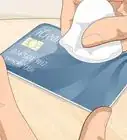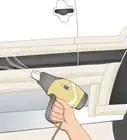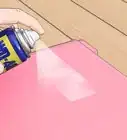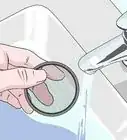This article was co-authored by Chris Willatt. Chris Willatt is the owner and founder of Alpine Maids, a cleaning agency in Denver, Colorado started in 2015. Alpine Maids has received Angie's List Super Service Award for three years in a row since 2016 and has been awarded Colorado's "Top Rated Local House Cleaning" Award in 2018.
This article has been viewed 140,415 times.
Have your plastic cups or car headlights developed a hazy fog? If so, don't worry. Cleaning foggy plastic is surprisingly easy, and you can usually do it using things you likely already have at home. In this article, we'll walk you through your best options for removing fogginess on plastic, including vinegar, baking soda, sandpaper, and plain old soapy water.
Steps
Cleaning Cups & Blenders with Vinegar
-
1Soak your cups in vinegar. Fill a small bucket (or your sink) with white vinegar. Submerge your foggy glasses in the vinegar for five minutes. Remove them and check the results.[1]
-
2Sprinkle baking soda on cups coated with vinegar. If the vinegar dip didn’t help clean your foggy plastic cups, sprinkle them with a handful of baking soda. Alternately, apply a dusting of baking soda to a damp sponge and scrub the cups. The baking soda and vinegar will react, dissolving the film that causes the plastic to appear foggy.[2]Advertisement
-
3Use a vinegar and water mixture. Combine white vinegar and water in equal parts. For instance, if you have a large load of foggy plastic, you might fill your sink with one liter of vinegar and one liter of water. Place your foggy plastic items in the water, and let them soak for one hour.[3]
- Scrub the plastic items with a damp rag until they become clear.
- Rinse the no longer foggy plastic in the sink under warm water. Dry with a soft cloth.
-
4Use a baking soda paste. Instead of using baking soda and vinegar, mix equal amounts of water and baking soda to form a paste. For instance, you might mix one tablespoon of baking soda with one tablespoon of water. Dab a paper towel into the baking soda paste. Apply the paste to a small area of the cloudy plastic using a steady circular motion.[4]
- As the paste removes the cloudiness from the inside of the blender or cup you’re cleaning, you will see the paper towel darken with grime.
-
5Try a lemon juice blend. Combine the juice of one lemon and two tablespoons of baking soda. Fill your foggy plastic cup or blender up the rest of the way with water. If you’re cleaning a foggy plastic blender, run the blender on high for a few seconds, then turn it off and remove the blade (if possible). With your cup or blender bottle still filled with the lemon juice mix, scrub the inside of it with a non-abrasive sponge or microfiber cloth. Pour the juice out when the fogginess has been corrected.[5]
Cleaning Foggy Headlights With Vinegar and Baking Soda
-
1Clean the headlight with soapy water. Fill a spray bottle with a few drops of mild liquid soap and water. Spray the headlight with this soapy mixture. Alternately, you could fill a bucket with soapy water and dip a clean cloth in it, then wipe the headlight with the damp cloth.
-
2Mix vinegar and baking soda. Sprinkle a few tablespoons of baking soda into a bowl. Pour a few tablespoons of vinegar into the bowl. The baking soda and vinegar, when mixed, will produce a fizzing reaction.[6]
- There is no need to carefully measure the volume of baking soda and vinegar you mix. Just add both in approximately equal amounts.
-
3Wipe the headlight clean using the mixture. Dip a clean cloth into the fizzing vinegar and baking soda. Wipe the headlight off using the same back-and-forth motion that you did when cleaning it with soapy water. The mixture will help your discolored, grimy plastic headlight get clean.[7]
- Don’t worry about hurting yourself when dipping your hand in the fizzy mixture. The combination of baking soda and vinegar won’t hurt you.
- When you’ve finished cleaning the headlight with the vinegar mix, wipe the headlights dry with a damp cloth or sponge.
Cleaning Foggy Headlights With Sandpaper
-
1Soak your sandpaper in water. Before cleaning your foggy headlights, place the sandpaper in water. You should have at least one piece of 1000 grit paper and one piece of 2000 or 3000 grit paper. Allow the sandpaper to soak for 15 minutes.
-
2Tape off the area surrounding the headlights with painter’s tape. Before you begin cleaning foggy plastic headlights, you’ll need to protect the metal area surrounding the headlight with tape. Painter’s tape is usually blue, though it might be available in other colors, and works just as regular masking tape does. Apply the tape in a border around the headlight you wish to clean.
-
3Spray the headlight with water and soap. Fill a spray bottle with water and a bit of car soap. Spray the headlights liberally with the mixture. Alternately, you might dip a cloth into the soapy water and wipe the headlight down using that.[8]
-
4Sand the headlight. Spray the headlight with the water and soap mixture while simultaneously rubbing it with the 1000 grit sandpaper. Move your hand from one side of the headlight to the other with firm, even pressure. Continue spraying the headlight with the soap mixture throughout.
-
5Inspect the headlight. After you’ve sanded the entire surface of the headlight, wipe it off with a clean, dry towel. Conduct a visual inspection of the headlight. The surface should be free of scratches and damage. The plastic will still look foggy. If some scratches or damage are still visible, spray the headlight again with water while sanding it down with 1000 grit sandpaper.
-
6Spray the headlight with soapy water. Spray the headlight with more of the soapy water. Alternately, you could use a damp sponge saturated with soapy water to wipe the headlight down.
-
7Wipe the headlight down with finer grit sandpaper. Continue spraying the headlight with soapy water. Use 2000 or 3000 grit sandpaper to further reduce the plastic headlight’s fogginess. Move the sandpaper from side-to-side while spraying constantly with your other hand.
-
8Check the headlight’s appearance. Once you’ve rubbed the finer grit sandpaper across the headlight’s surface, dry it with a clean cloth. The headlight lens should have a uniform and slightly cloudy appearance.
- If the headlight’s surface is not uniform in appearance, wipe the headlight down again with 2000 or 3000 grit sandpaper while spraying it with soapy water.
-
9Polish the headlight. Apply two small dabs of regular polish to a rotary sander-polisher equipped with a four-inch (eight-centimeter) polishing pad. Wipe the pad about the surface of the headlight before turning it on. Then, set the polisher to a speed between 1500-1800 rotations per minute and move the pad slowly across the surface of the headlight.
- Use only a slight pressure when applying the polisher pad to the headlight.
- This step will remove any haziness that remains from the sanding process.
-
10Inspect the headlight. If the initial coat of polish does not improve the foggy plastic, wait a few moments to allow the plastic headlight to cool. Apply another two small dabs of polish to the polishing pad, then polish the headlight with the rotary sander-polisher again.
-
11Apply a finishing polish. Applying a finishing polish will further refine the plastic headlight’s clarity. Once you’ve successfully polished the headlight, apply two small dabs of finishing polish to a clean four-inch (eight-centimeter) rotary pad. Just as before, wipe the rotary pad about the surface of the plastic headlight before turning the rotary sander-polisher on. Set the polisher to 1200-1500 rotations per minute. Turn the polisher on and move it slowly and evenly across the surface of the headlight.
- When you’re done, wipe the headlight off with a dry hand towel. Remove the tape surrounding the edges of the headlight.
- At this point, no fogginess should remain and the plastic headlight should be clear. If some fogginess remains, apply another coat of finishing polish, then wipe it away with a clean hand towel.
References
- ↑ http://www.goodhousekeeping.com/home/cleaning/a38591/how-to-clean-cloudy-drinking-glasses/
- ↑ http://www.goodhousekeeping.com/home/cleaning/a38591/how-to-clean-cloudy-drinking-glasses/
- ↑ https://www.hunker.com/12001918/how-to-clean-cloudy-plastic
- ↑ https://blenderladyblog.com/1537/clean-vitamix-container/
- ↑ http://greensmoothiegirl.com/2012/08/22/what-to-do-about-my-cloudy-blender-jar/
- ↑ Ahmed Mezil. Cleaning Specialist. Expert Interview. 13 April 2021.
- ↑ Ahmed Mezil. Cleaning Specialist. Expert Interview. 13 April 2021.
- ↑ Chris Willatt. House Cleaning Professional. Expert Interview. 1 July 2019.
About This Article
To clean foggy plastic, all you’ll need is some white vinegar. Try soaking plastic glasses in a tub of white vinegar for 5 minutes, then check the results. If they still look a little foggy, dust some baking soda onto the cups. The baking soda and vinegar will react, removing any leftover film that causes the plastic to appear foggy. For larger plastic items, make a mixture of 1 part water and 1 part vinegar in your sink. Soak the items in the mixture for 1 hour. If you’re trying to remove fog from plastic headlights, you can also use vinegar and baking soda. First, wash the headlights with soapy water. Next, mix some vinegar and baking soda into a paste. Wipe the mixture onto the headlights using a clean cloth. Finish by wiping the mixture off the headlights with a damp rag or sponge. For tips on how to remove fog from plastic with a lemon juice solution, keep reading!


